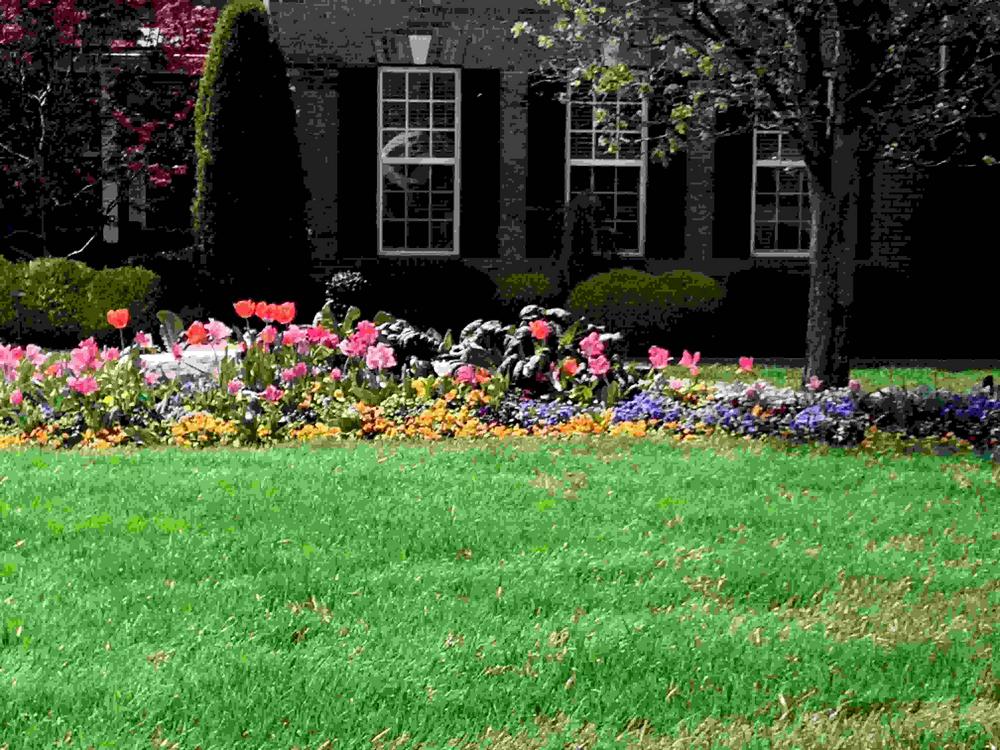Texas is a state of extreme weather and unique lawn care challenges. From the relentless heat of the summer sun to the predominantly clay-rich soils, the quest for the best lawn fertilizer for Texas is a necessity for any DIY lawn enthusiast committed to maintaining a lush, green landscape.
In this article, we delve deep into the essentials of lawn care—from understanding the core benefits of various fertilizers to determining the optimal fertilizing schedule to maximize your lawn's health and aesthetics.
Whether you're aiming to rejuvenate an underperforming yard or maintain the verdant splendor of your current setup, our guide will address all your queries. So, if you're looking to give your Texas lawn a significant boost, keep reading; we're here to ensure your grass is always greener.
What this article covers:- What's the Best Fertilizer For Your Lawn?
- What Does a Lawn Fertilizer Do?
- Factors to Consider When Fertilizing
- When to Fertilize Lawns in Texas
- How Often Should You Feed Your Lawn?
What's the Best Fertilizer For Your Lawn?
Choosing the best lawn fertilizer depends on your lawn's specific needs. If your lawn is primarily clay soil, you'll need a fertilizer that addresses the unique challenges this type of soil presents. Clay soil tends to be dense and can lead to poor drainage, making it harder for roots to grow.
From our experience, slow-release fertilizers are fantastic for steady, long-term growth, as they provide a consistent supply of nutrients. Consider our Emerald 10-0-20 Lawn Fertilizer with Iron if you’re seeking a reliable slow-release fertilizer. Quick-release fertilizers are excellent for immediate green-up, giving your lawn a rapid boost when it needs it most.

For clay soils, incorporating organic matter or soil conditioners like gypsum can help break up the soil and improve nutrient absorption. According to our research, fertilizers with a balanced N-P-K ratio (nitrogen, phosphorus, potassium) are versatile and effective, promoting overall lawn health and growth.
Our collection of lawn fertilizer is tailored to meet the diverse needs of your lawn, ensuring that you have the best lawn fertilizer for every situation.
Whether you're dealing with clay soil, sandy soil, or something in between, our products are designed to deliver optimal results, keeping your lawn lush and green all season long.
What Does a Lawn Fertilizer Do?
Fertilizers provide essential nutrients that your lawn might lack. Nitrogen promotes green growth, phosphorus strengthens roots, and potassium enhances drought resistance.
The best new lawn fertilizer will support young grass as it establishes. Fertilizers are not just about feeding your lawn; they ensure that the grass receives all necessary nutrients for optimal health and growth. Nitrogen is crucial for the vibrant green color and dense leaf growth.
Phosphorus is vital for root development and overall plant strength, which is particularly important for young or newly seeded lawns. Potassium, on the other hand, enhances the lawn's ability to withstand drought, disease, and cold weather, making it more resilient.
Based on our first hand experience, incorporating a balanced blend of these nutrients can lead to a healthier, more robust lawn.
Factors to Consider When Fertilizing
When it comes to fertilizing your lawn, several crucial factors must be considered to ensure optimal results. Let's explore these essential elements that influence the effectiveness of your fertilization efforts. Understanding these factors will help you make informed decisions and achieve a lush, healthy lawn.
Shade and Fertilizer
Grass in shaded areas grows differently than in full sun. Shade affects the amount of light, water, and nutrients your lawn receives, which in turn influences its growth patterns.
When dealing with shaded areas, it's crucial to use a fertilizer formulated specifically for these conditions. Grass under trees or near structures has to compete with tree roots and may receive less sunlight, making it grow more slowly and often thinner.
Using a specialized slow-release fertilizer can help address these challenges by providing the right balance of nutrients that promote healthy growth even in low-light conditions.

Soil Types
Texas is known for its challenging soil. The state's varied landscape means you could be dealing with clay, sandy, silty, or loam soils, each requiring different care. The best fertilizer for clay soil lawn is one that improves aeration and drainage.
Clay soil is dense and tends to compact, which can restrict root growth and water penetration. Fertilizers high in organic matter or soil conditioners like gypsum can help break up the clay and improve soil structure, making it easier for grass to thrive.
If you have sandy soil, it presents a different challenge. Sandy soil drains quickly and doesn't hold nutrients well. For these conditions, look for the best lawn fertilizer for sandy soil that helps retain moisture and nutrients.
Fertilizers rich in organic matter can increase the soil's ability to hold water and provide a steady release of nutrients. This helps prevent the nutrients from leaching away quickly, which is a common issue with sandy soils. Check out our Organic Lawn Fertilizer 5-3-0 to add organic matter quickly.
Silty soil, with its smooth texture, holds moisture better than sandy soil but can become compacted like clay. Loam soil, which is a balanced mix of sand, silt, and clay, is ideal for most lawns because it retains moisture and nutrients while still providing good drainage.
No matter your soil type, selecting the right fertilizer is crucial for promoting healthy, robust grass. At Lawn Synergy, we provide expert solutions and products tailored to meet the specific needs of your soil, ensuring that your lawn remains lush and green throughout the year.

Lawn Issues
For lawns battling weeds, consider the best weed and feed for lawns. These products combine essential nutrients with powerful herbicides to tackle two problems at once.
Weeds compete with grass for nutrients, water, and light, often leading to patchy, unhealthy lawns. A high-quality weed and feed product provides a dual-action approach: the herbicides kill the weeds while the fertilizer boosts the health and growth of your grass.
When to Fertilize Lawns in Texas
Timing is key when it comes to fertilizing lawns in Texas. For warm-season grasses like Bermuda, the best time to fertilize is in late spring and throughout the summer. This period aligns with their peak growing season, ensuring that the nutrients are utilized efficiently to promote lush, green growth.
Early Spring: Safeguard 0-0-7 Pre-emergent
Late Spring: Guardian 13-0-10 Pre-emergent Fertilizer
Summer: Almighty 20-0-10 Lawn Fertilizer every 6-8 weeks during the growing season. Can also be alternating with Emerald 10-0-20 Lawn Fertilizer
Early Fall: Guardian 13-0-10 Pre-emergent Fertilizer
Following the product's instructions is crucial for the best results. Over-fertilization can lead to lawn burn and environmental issues, while under-fertilization may not provide the desired benefits.
How Often Should You Feed Your Lawn?
Consistency is crucial. Generally, fertilizing every 6-8 weeks during the growing season is ideal. However, the best organic fertilizer for lawn may require different intervals. Organic options often feed the soil and grass more gradually and can also be used with our synthetic options.
Conclusion
Finding the best lawn fertilizer for Texas requires considering your lawn's specific needs, from soil type to grass variety.
By using the right products at the right times, you can achieve a lush, green lawn. Lawn Synergy provides reliable, people-first products that truly work. Visit our website to explore more options and get your lawn thriving today!
If you want to learn more, why not check out these articles below:
- Best Lawn Fertilizer for Florida
- Best Iron Fertilizer for Lawn
- Best Way to Grow Grass
- Best Weed and Feed for Bermuda Grass
- Best Fertilizer for Yellow Grass
- Best Fertilizer for Bahia Grass
- Best Fertilizer for Tall Fescue Grass
- Best Weed and Feed for St. Augustine Grass
- Best Fertilizer for Centipede Grass in South Carolina
- Best Grass Seed Fertilizer
- Best Fertilizer for Mondo Grass



